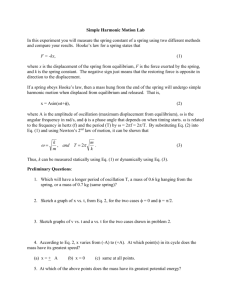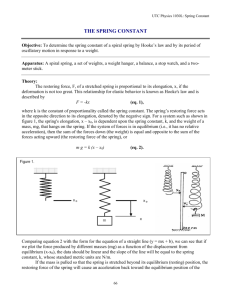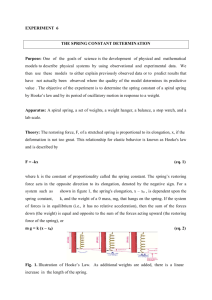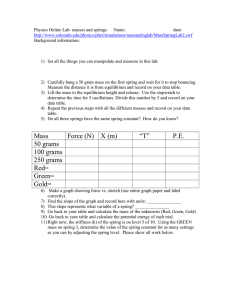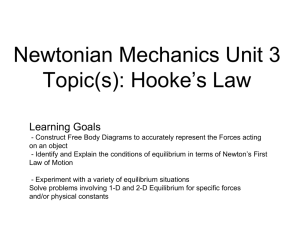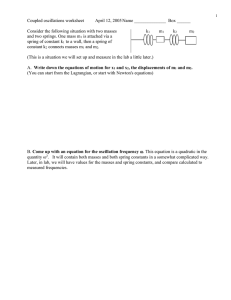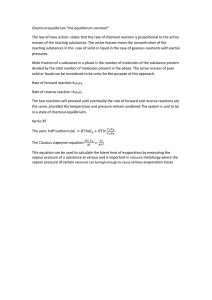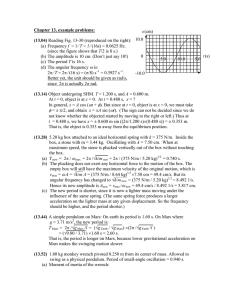Oscillating spring
advertisement
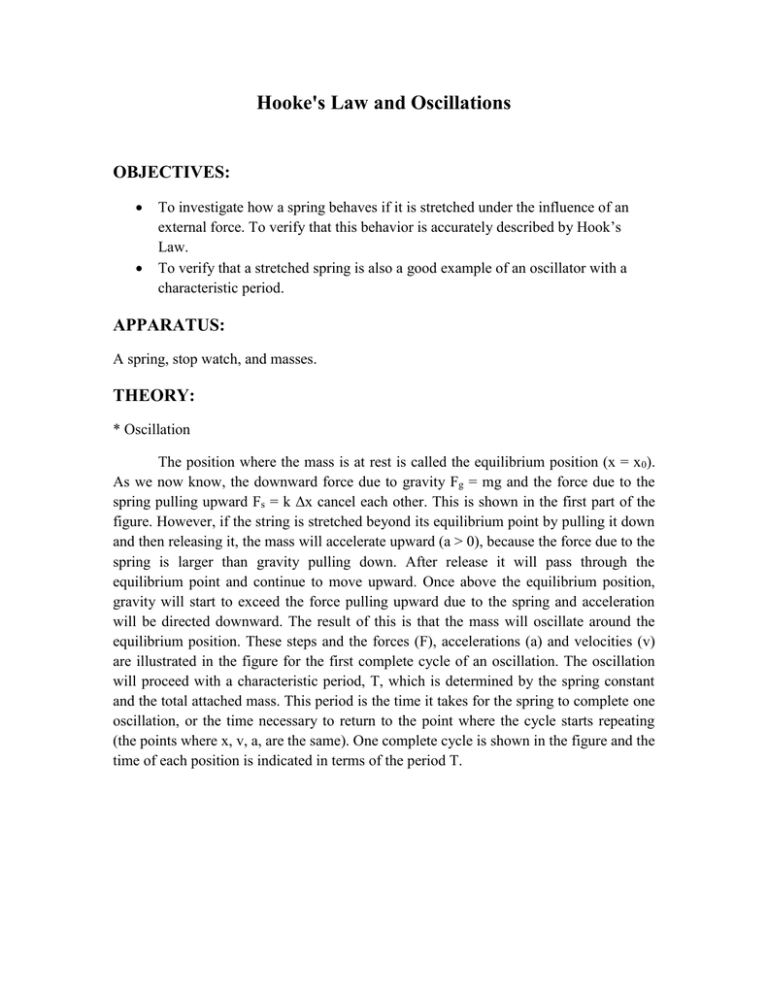
Hooke's Law and Oscillations OBJECTIVES: To investigate how a spring behaves if it is stretched under the influence of an external force. To verify that this behavior is accurately described by Hook’s Law. To verify that a stretched spring is also a good example of an oscillator with a characteristic period. APPARATUS: A spring, stop watch, and masses. THEORY: * Oscillation The position where the mass is at rest is called the equilibrium position (x = x0). As we now know, the downward force due to gravity Fg = mg and the force due to the spring pulling upward Fs = k Δx cancel each other. This is shown in the first part of the figure. However, if the string is stretched beyond its equilibrium point by pulling it down and then releasing it, the mass will accelerate upward (a > 0), because the force due to the spring is larger than gravity pulling down. After release it will pass through the equilibrium point and continue to move upward. Once above the equilibrium position, gravity will start to exceed the force pulling upward due to the spring and acceleration will be directed downward. The result of this is that the mass will oscillate around the equilibrium position. These steps and the forces (F), accelerations (a) and velocities (v) are illustrated in the figure for the first complete cycle of an oscillation. The oscillation will proceed with a characteristic period, T, which is determined by the spring constant and the total attached mass. This period is the time it takes for the spring to complete one oscillation, or the time necessary to return to the point where the cycle starts repeating (the points where x, v, a, are the same). One complete cycle is shown in the figure and the time of each position is indicated in terms of the period T. Figure: One Cycle of an Oscillation of the Spring The period is given by T = 2π (m/k)1/2 By measuring the period for given masses the spring constant can be determined. You will use this value of k to verify that the proportionality constant you determined for Hooke’s Law in the first part is indeed the correct k for the spring. PROCEDURE: Part II: Period of Oscillation Determine the period for attached masses varying from 50 to 200 g in steps of 10 g. When displacing the masses, DO NOT stretch the spring more than about 2 cm from its equilibrium position. Measure the time period of 10 periods using a stop watch. Thus it measures the time for the masses (and thus the spring), to complete a whole period. - Plot a graph of T2 vs. m. Find the slope of the linear relation: Slope = 4 π2/k k = 4 π2/ slope QUESTIONS: 1) What are the units for the spring constant used in this lab? 2) Have you proven Hooke's Law? CHECKLIST: Your lab report should include the following three items: 1) Spreadsheet with the data. 2) Graph of F vs. Δx with a best-fit line and equation of best-fit line Mass ‘m’ (g) 50 60 70 80 90 100 110 120 130 140 150 Time ‘t’ (s) T = t /10 (s) T2 (s2)
